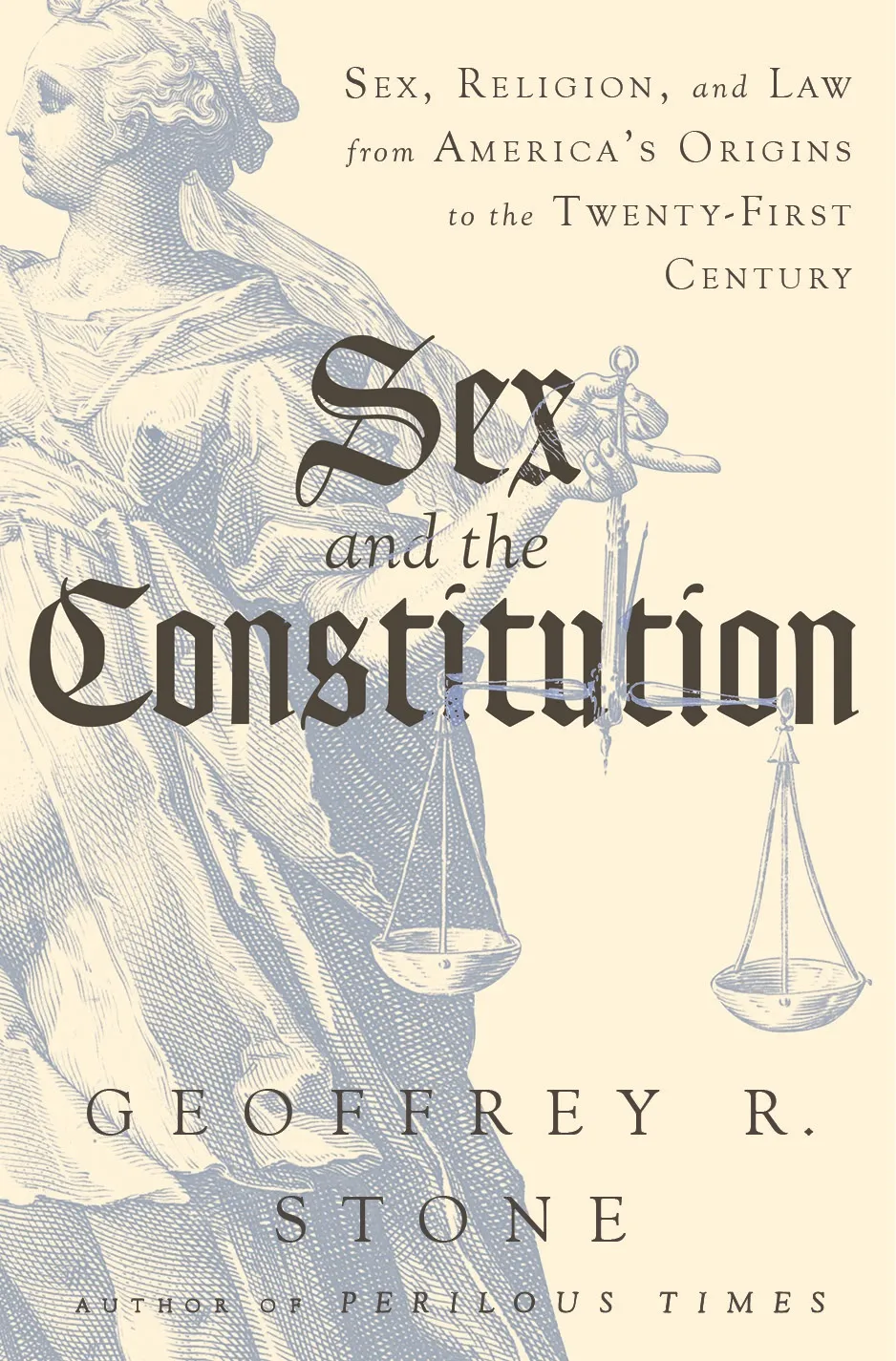A Decade in the Making

A decade ago, when Geoffrey R. Stone was beginning to research his new book on sex, law, and religion, he wasn’t quite sure where his inquiry was headed. And that was unusual; he’d always started his projects with a pretty accurate roadmap.
“It was the first time I’d ever embarked upon an enterprise without knowing what I was going to need to know, or where I was going to need to go,” said Stone, a constitutional scholar and the Edward H. Levi Distinguished Service Professor of Law. “In this case, I thought I was going to write a relatively narrow legal analysis of these issues—nobody had ever looked at abortion, contraception, gay rights, and sexual expression as a whole.”
As his path widened and wound, though, it took him deep into the past—and eventually lead to Sex and the Constitution: Sex, Religion, and Law from America’s Origins to the Twenty-First Century (Liveright, March 2017), the first and only comprehensive history of how sex came to be legislated in America.
There were intriguing commonalities in the three legal areas Stone set out to explore. Issues related to obscenity, sexual orientation, and reproductive rights were inextricably bound up in religious beliefs about sin and shame—a conundrum, Stone noted, given the nation’s historic commitment to the separation of church and state. And so early on, he began to think about the men who had designed the US Constitution, which lays out both religious freedom and the separation of church and state—but says almost nothing about sexual freedom.
“Why didn’t they guarantee a constitutional right to, say, have an abortion? Part of the answer to that, I would suspect, is that it never would have occurred to them—it had always been legal, and no one had ever fussed over it,” Stone said. “It wasn’t like free speech, or search and seizure, or self-incrimination, where there had been long histories of what the Framers saw as abuse and denial of these rights. I’m sure they didn’t give a moment’s thought to these issues (of sexual freedom) because they took for granted that it was like eating—you don’t need a right to eat.”
What, he began to wonder, would the Framers make of contemporary America and its political preoccupation with abortion, contraception, sodomy, and obscenity and its divisive battles over the government’s role in regulating sexual behavior?
“I think if you’d asked the Framers, they would have said that for the government to enact laws that impose one religion’s faith upon other persons, particularly when the other persons are exercising a fundamental personal right, would be incompatible with the idea of separation of church and state,” Stone said.
But how does one separate norms and morality from religion? Whose values qualify as “traditional values”? And how and why did sex, religion, and law become so enmeshed?
Soon, he was digging deep into history, unspooling the sexual mores of the Puritans, medieval Europeans, early Christians, and the ancient Greeks and Romans. When he finished, his project had blossomed into an epic tale of humanity’s complicated relationship with sex and morality—from the sexually liberal attitudes in ancient Greece and Rome to the complex entanglement with sin and shame that emerged with Christianity and eventually became woven into American thinking through the Second Great Awakening and beyond.
“When you start with the ancient Greeks and Romans, you see what the world might look like without the particular features of Christian dogma, which became our norm over time,” Stone said. “I wanted to demonstrate to the reader that our ‘traditional’ attitudes about sexuality are not inherent in civilization and that other cultures that we’ve admired have had very different attitudes than ours, and I wanted to also help frame what impact Christianity had on western culture in this particular respect.”
Sex and the Constitution uses the sweep of history to illuminate this point, creating a foundation for the book’s second half, which explores the how the Supreme Court, beginning in the mid-20th century, worked to curb efforts by religious conservatives to ban contraception and abortion, deny gay rights, and censor various forms of sexual expression. Along the way, Stone introduces key figures like anti-obscenity crusader Anthony Comstock and birth control activist Margaret Sanger and discusses dozens of landmark cases, including Roth v. United States (1957), Griswold v. Connecticut (1965), Cohen v. California (1971), Roe v. Wade (1973), Bowers v. Hardwick (1986), Romer v. Evans (1996), Lawrence v. Texas (2003), Gonzales v. Carhart (2007), Obergefell v. Hodges (2015), and Whole Woman’s Health v. Hellerstedt (2016).
On the jacket and in the epilogue, the book also acknowledges the eleventh-hour political surprise—the election of Donald J. Trump, which coincided with a vacancy on the Supreme Court—that caused Stone to call his own “naïve optimism” into question.
“The book originally ended on an upbeat notion, talking about how we have to respect the rights of religious people, not by allowing them to restrict others but by respecting their sincerely held religious beliefs,” Stone said. Instead, he notes on the jacket that “we seem to have taken a huge step backward,” and he ends the book by noting that the Supreme Court is likely to become more conservative than at any time in the past century, jeopardizing decisions like Roe or Obergefell. (If Trump ends up filling a second vacancy on the Court, Stone predicted that conservative justices would move quickly to overturn Roe, but were more likely to leave Obergefell alone.)
Regardless of what happens next, Stone hopes that readers gain a broader and deeper sense of how our attitudes toward sexual behavior have evolved—and how religion and law intersect.
“We have to be careful about the way in which we deal with our religious beliefs as citizens,” he said. "What we've seen over the past half-century (with decisions like Roe v. Wade) is not a novel shift in freedoms but a return, for the most part, to where we were and where we should be."
